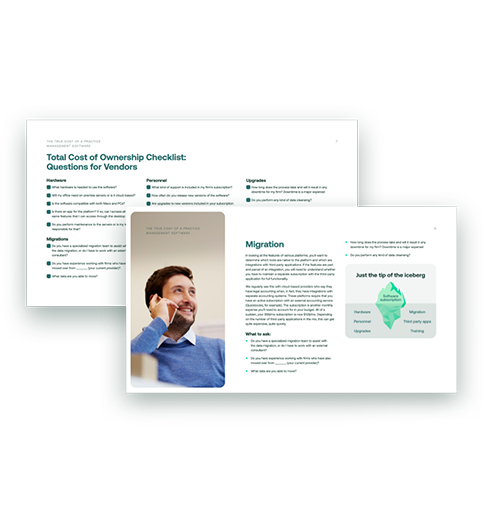Attorneys have a fiduciary duty that prevents them from representing someone whose interests directly conflict with those of a client they currently represent.
Most lawyers have multiple clients, and many will work in more than one firm throughout their careers. That leaves many instances for lawyers to potentially run into a conflict of interest when researching prospective new clients.
What is a Conflict Check?
Attorneys have a duty that prevents them from representing someone whose interests directly contradicts those of a client they currently represent. To do so constitutes a conflict of interest. Many conflicts of interest may not be easily identified, and go unchecked until after retainer agreements are signed. This can cause devastating consequences, like being disqualified from representation or becoming at-risk for malpractice claims.
When are conflict checks usually performed?
Law firms typically run conflict checks when the attorney-client relationship begins by checking a potential client against a list of current and former client names. However, there are a few other common situations where potential conflicts of interest can arise:
- Representing two clients with opposing interests
- Representing a client when you have conflicting responsibilities to a current or former client or third party
- Representing a party when you represented an opposing party related to the same case at a former firm
- Dropping the representation of a client and then representing the opposing party in the same matter
What’s An LPMS Really Cost?
Download our whitepaper to get the ‘Full Cost of Ownership’ checklist with a list of questions for legal practice management software (LPMS) vendors.

What Should Conflict Checks Include?
To go beyond the minimum when pinpointing conflicts, a conflict-checking system needs to capture as much information as possible, including:
- Case status – open or closed
- Client name
- Matter number
- Case name and number
- Co-parties
- Insurers and insureds
- Plaintiff(s)
- Defendant(s)
- Opposing counsel and co-counsel
- Witnesses
- Employers
Performing a conflict check needs to happen before conducting extensive discussions with a potential client. There’s a good chance that initial discussions might reveal case details before an attorney realizes they already represent someone with adverse interests.

CARET Legal users can check potential clients against their current contact list
What happens if a Conflict is identified?
When a potential conflict is identified, the ABA’s Model Rules of Professional Conduct provides guidance regarding whether the conflict is actual or potential and whether the attorney must decline representation, or a waiver might be an option.
By leveraging a practice management application with matter management and complete billing and accounting, your firm has the depth of analysis needed to ensure the absence of conflicts at all levels.
How Practice Management Software Conducts Conflict Checks Effectively
You want a conflict check process that works like Google and can find every detail from any year in seconds. By leveraging a practice management platform that runs on automation, you can integrate conflict checks into every part of your case evaluation process.
It can search across your entire scope of documentation
Missed document details are a big driver of issues; even something as simple as how a client or related party’s name is spelled can lead to conflict-check mistakes. With practice management software, instead of manually accessing every source and database that has client information (if you can remember all of these locations to begin with), everything is centralized and automatically searchable. It can even search your emails.
It can check for conflicts across past and present contact data
Being able to check for a conflict of interest in your historical data is also important. Before you archive away old case files and contacts you haven’t spoken to in a few years, think again. Save yourself the hassle of manually scanning through archived data and instead utilize your practice management system’s ability to filter out older information. You won’t see the data anymore, but it will still be included in query results when a conflict check is conducted.
Instead of wasting valuable manpower researching a potential client, then possibly botching the conflict check results and causing further legal challenges, rely on automated legal technology to handle this process.
Why Relying On Practice Management Software for Conflict Checks Is a Safer Bet
While some legal professionals continue to rely on index cards, spreadsheets, or paper forms when conducting conflict checks, this manual process is time-consuming, non-billable, prone to human error, and fraught with delays. End-to-end legal practice management software with sophisticated search capabilities can facilitate a more seamless process, allowing legal teams to identify potential conflicts faster and more accurately.
The best conflict-checking system is constantly updated with new information from each case, integrated with other office systems such as time tracking, billing, and case management, and used by all members of the firm. Here is why it’s easier (and more efficient) for legal professionals to do a conflict check when everything is under one system:
- Next-level efficiency. A traditional conflict check manually searches a firm’s vast client database and lists of vendors and other parties. In contrast, using a robust practice management application allows users to review all the necessary data sources more quickly, significantly reducing the time required to perform due diligence.
- Easy reviews. When potential conflicts of interest are identified, they need to be analyzed to determine whether they pose a serious concern. A complete practice management platform can immediately highlight potential conflicts and allow you to dig in for additional details before they are presented for clearance.
- Risk mitigation. Modern practice management systems accelerate the entire conflict review process by enabling users to rapidly locate possible exposures to conflict of interest to help boost a firm’s profitability while simultaneously lowering its exposure to regulatory risk.
By leveraging a complete practice management platform your firm can be assured that it has the depth of analysis to mitigate conflicts effectively.
Checking for Conflicts – Before It’s Too Late
One of the worst things that can happen when a lawyer messes up a conflict check is that knowledge of the conflict comes too late – after representation has begun. At that point, the client might agree to sign a waiver to continue the representation, or another attorney (or another firm) will need to take over the case. Neither is ideal and both can cause preventable delays and reputational damage.
CARET Legal can help you root out conflicts, allowing lawyers to avoid wasted time, the appearance of impropriety, unfavorable online reviews, and unnecessary headaches. Get started with a free trial!
If you’re an insurance defense firm, check out this specific conflict checking post!
